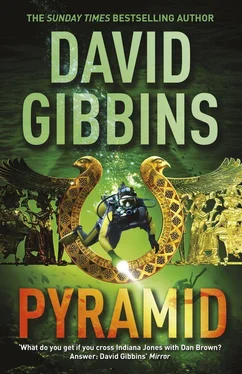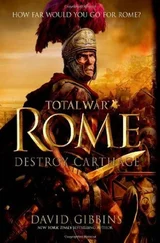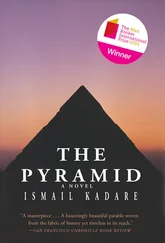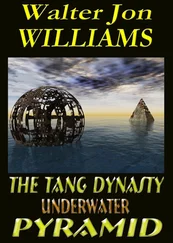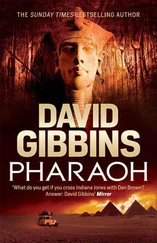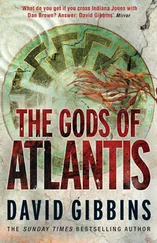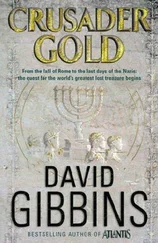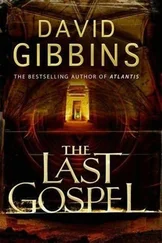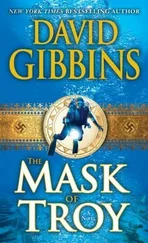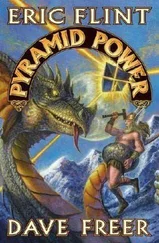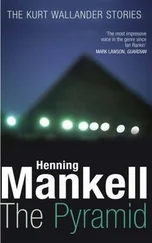“And he had an eye for the history he saw around him.”
“Correct. And now we’re getting to the nub of it. While he was in Cairo for those months in 1140 to 1141, he became good friends with the nagid , the Jewish community leader — a man named Samuel ben Hananiah — and with a wealthy merchant named Halfon ben Netanel. He also corresponded regularly with his intellectual friends back in Spain. He loved Egypt: ‘This is a wondrous land to see, and I would stay, but my locks are grey,’ he wrote. He was anxious to get to Jerusalem, but he wanted to lap up everything he could about Egypt while he was here. The caliph Al-Hakim comes into the story because the Jews in Spain had a particular fascination with the behavior of the Muslim potentates of the Near East at a time when Spanish Jews were looking anxiously over their own shoulders at their own Islamic overlords and wondering what the future might hold. Al-Hakim wasn’t exactly the flavor of the month. He was reviled among Jews and Christians alike for ordering the destruction of the Holy Sepulchre in Jerusalem in 1021 and, for good measure, the Ben Ezra synagogue here in Cairo as well. But they also saw him as a complex and intriguing man who might be the basis for a lesson in morality. Halevi loved a mystery, and he was especially interested in the questions over Al-Hakim’s death. This letter seems to be a draft of something he may never have actually sent off, written to his son-in-law, the scholar and historian Abraham Ibn Ezra in Toledo.”
“Can you translate it?”
She clicked the screen, calling up an enhanced photographic image of the text with English words overlaid. Jack leaned over her shoulder and followed as she read:
To my son-in-law Abraham Ibn Ezra and my daughter Ribca, my heart belongs to you, you noble souls, who draw me to you with bonds of love. In my last letter I wrote to you of the Caliph Al-Hakim, and of how my friends the nagid and the merchant Halfon have revealed much that is new to me about his disappearance in the desert, a mystery above all others in this mysterious and beguiling land. I ask you to pass on this letter to my friends the astronomer Ibn Yunus and the mathematician Ibn al-Haytham, as they may be able to sit down with the maps I sent and their measuring instruments and make sense of the story I have been told. Al-Hakim had taken to wandering into the desert alone on his donkey south of Cairo every night, having ordered his retainers and guards to stay at the city gate. Some say he was, in truth, a god; his disappearance was a reversion to his nonhuman form. Some also say that by persecuting Jews and Christians he was going against Islamic law; yet as caliph, he was not accountable to any law, but the law to him. That is surely enough to drive any man to insanity, or to the desert! Perhaps like the pharaoh who sought the Aten in the desert, who made his temple at Fustat, aligned towards the pyramids, he was shedding that impossible burden, and seeking simplicity. When he went to the desert he went not as caliph, but as a man.
Maria looked up. “The literal translation of the epithet he uses for Al-Hakim is ‘sand-traveller,’ which itself is the literal translation of an ancient Egyptian term known only from hieroglyphs. It’s almost as if they were speaking the same language.”
Jack shook his head in amazement. “Fascinating,” he exclaimed. “That meshes with my own revelation just now in the synagogue when I realized that I knew that a stone excavated in 1890 from the synagogue precinct contained the hieroglyphic cartouche of none other than Akhenaten. It begins to fit with a wider picture, that the site of medieval Fustat was once connected with the ancient complex of Heliopolis, where northeastern Cairo now stands. Heliopolis was the center for the worship of the sun god Ra, and a logical place for Akhenaten to build a great temple to the Aten. Maurice told me that blocks from that temple have been identified in the medieval walls of Cairo. That was my first thought when Aysha told me about the British officers discovering the stone with the cartouche here in 1890. But the account in that officer’s diary makes it sound as if it came from an in situ ancient structure, not a medieval one, so it fits with what Halevi suggests about a separate Pharaonic religious complex here, one aligned to the pyramids rather than to the old cult center at Heliopolis. Is there more, Maria?”
“A few sentences, before the tear.” She carried on reading:
Now ben Netanel tells me this. His great-grandfather as a boy secretly followed Al-Hakim out into the desert that final night, a dare among the boys of Fustat to see where the caliph was really going. He watched from behind a dune as Al-Hakim hobbled his donkey with a knife, stripped off his clothes and slashed them with the bloody blade, and then stood there naked, raising his arms to the sky. His murder was a ruse. He wanted the world to think that he had died. He had indeed undergone a transmogrification, not from caliph to god, but from caliph to man. He did not die, but he disappeared down a hole in the ground into the underworld, never to be seen again. This is no fable; this is truth.
Jack waited in silence for a moment, coursing with excitement. “ The underworld . Go on,” he urged.
Maria sat back. “That’s it.”
Jack closed his eyes. That’s it? “Are you sure?”
Maria glanced at Aysha. “Well, there might be more. Yesterday evening after I got set up here, Aysha and I climbed into the chamber and managed to see through the hole with our torches. We were able to prize free this fragment, but we saw another sheet compacted against the stone beyond it that could be the torn lower half of the page. We don’t have any extraction tools that wouldn’t damage it, and would probably tear it into shreds. Everything has to be done here the old-fashioned way, with bare hands. And Aysha and I are, well, both a little short on length.”
Jack stared at her. “You’re telling me you got me all the way here because I’ve got long arms?”
“The longest in Cairo. Probably the longest in Egypt. And fingers used to feeling around in the murk. Diving down holes is your specialty, isn’t it?”
Jack shook his head. “What you need is Little Joey. Costas’ miniature robot. His buddy. That’s the real reason he’s pining to get back to his engineering lab on Seaquest , not the problems of raising the sarcophagus of Menkaure.”
“We thought of asking him along too, but we didn’t think that mouse droppings were really his thing.”
“That’s probably wise. Underwater is fine, but holes in the ground full of decayed matter are not what he signed up for.”
“Of course, there’s the inevitable curse, as well,” Aysha said. “The Geniza was said to be guarded by a serpent who bedded down in the manuscripts like a dragon with its treasure. Anyone who went in was doomed. Look what happened to Solomon Schechter.”
“Snakes,” Jack muttered. “Definitely not Costas’ scene.”
“Then you’ll have to go it alone,” Maria said.
Jack stared at the filth on the fragment of vellum. “I’ll need protective clothing. Some kind of respirator.”
Aysha nodded at a large plastic crate beside the ladder. “We’re one step ahead of you. Full biological, chemical, and nuclear protection suits liberated from an army depot by a friend of mine.”
Maria glanced at him. “You good to go?”
Jack looked at his watch, and then up at the hole into the Geniza chamber above him, black and slightly forbidding. “Okay. There’s no time for dithering or, the gods protect me, for curses. Let’s do it.”
Alight came on, harsh, blinding, and the young woman in the center of the room turned her head away from it, shutting her eyes tight against the glare. She strained against the bindings that held her hands to the back of the chair, no longer feeling the pain where the rope had cut into her wrists. Even the slight movement of her head had brought back the sickening stench of the room, full of people bound like her who had lain in their own filth for days, and in the filth of others before them who had died or been dragged away for execution. She had been in here for only a few hours, but with their watches removed and no clock, she was already beginning to lose track of time. The only break in the sepulchral gloom was when the light cut in, when those who still had the energy moaned and whimpered with fear, when their captors came for another victim.
Читать дальше
